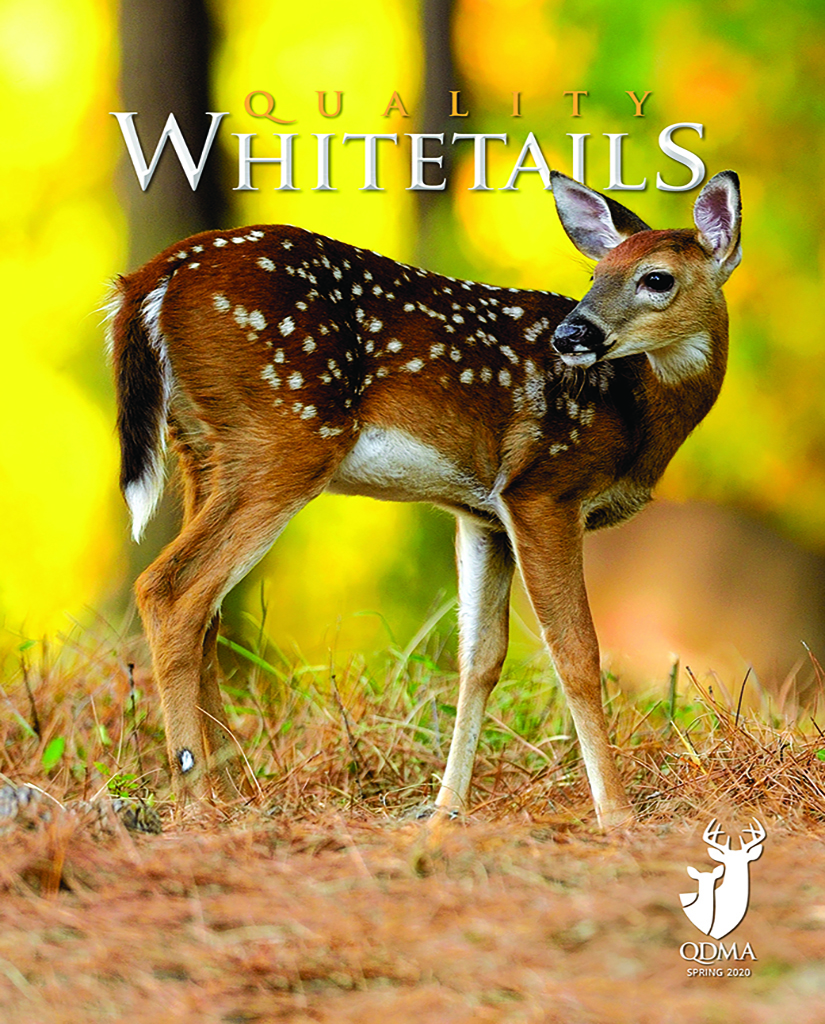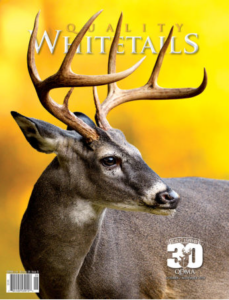

Shifting Revenue Streams
Facing a loss of event revenue, this association is leaning into print.
By Lindsay Thomas Jr.
Events. They’re our lifeblood.
Our organization, Quality Deer Management Association (QDMA), runs 150-160 events every year. We have large events, like our National Convention. And then our local Branch volunteers hold grassroots events all year, all around the country, that include educational seminars, field days, and fundraising banquets. These are the events that mobilize the efforts that define us. They are the opportunities to engage people in learning about and conserving deer and wildlife habitat.
This year, we lost half a million dollars in events canceled due to COVID-19. How does an association manage and persist with this kind of hit?
Every nonprofit runs on thin margins. That’s the job. You take your profits and put them right back into your mission. I’m proud to say that QDMA has a 4-star rating, the highest possible, with Charity Navigator for being an organization that puts a large slice of our revenue back into our mission. In our case, it’s over 85 percent. A half million-dollar loss set us back on our heels.
As an organization, we’re working on multiple fronts to counter this loss and optimize our chances of emerging from this crisis — whenever that may be — as strong as possible. After canceling all events for three months (to start) and refunding those registrations (respectfully giving registrants the option to transfer these to donations), we made the difficult decision to furlough some employees; made salary cuts for the remaining employees; froze all travel plans; applied for (and secured) a PPP loan; and started aggressively looking for alternate sources of income. This last effort led to new online fundraising and unplanned donor asks, both of which have been successful.
Our print magazine, Quality Whitetails, also registered on the list of possible cuts, and it was a big one. Printing, postage, and staff time could be saved immediately by saying, “We just can’t do the magazine right now.” When our executive team and chairman looked at our budget, everyone one of us recognized the potential savings.
If you’re like me, you do some of your best thinking on the weekend. Away from the office, the meetings, and the discussions. With time for the thoughts to percolate and gel. I’m a journalist, so writing helps me think, too. After a series of executive-level meetings, I had such a weekend of contemplation and writing. I came back to our team with what essentially amounted to a white paper that articulated, in part, a rationale for maintaining the continuity of our print magazine throughout the crisis and in light of our other actions. It came down to this.
When QDMA members get our magazine in their mailboxes, they can’t ignore it. They know they have received their copy. Most members report consuming every page, and then it persists. It sits in their homes; it goes to deer camps; and it gets filed in the bookshelf collections. It touches people in a concrete way that’s different from an email, a blog, or a social media post. It takes on a life of its own.
Our magazine offers value beyond the flip-through. Quality Whitetails is where we do long-form journalism, philosophical reads, and a deep dive into our mission work and volunteer accomplishments. On the web, we do shorter content for those with only a passing minute to spare, but our print content is intended to offer an enriching and personal connection to our organization. That’s a connection we just can’t give up.
And, I argued, our print magazine reaches some members we can’t reach with emails, blogs, and social media. We have many members who aren’t oriented to digital. They don’t visit our website often or open our emails. Our digital arms are healthy and growing — and that’s important — but if we turn away from our print magazine, we aren’t going to reach everyone. Our magazine touches members we just don’t touch any other way. Period.
There’s also the role our print magazine plays during a time of crisis. We’re unabashedly asking our members for help. By sending them the next issue of Quality Whitetails, we’re telling them, “You have made a difference. We’re able to get this magazine to you because of your help.” It just doesn’t feel right to ask our members for donations and then to not produce the magazine. It’s like admitting their donations didn’t work or that, worse, we don’t know how to manage them. Instead we’re saying, “This magazine is proof that you are making a difference.”
And, of course, the magazine is a platform to ask for more help. We’re currently working on our next issue, in which we’ll be telling the stories of members (and Branches) who have risen to the occasion and done a lot to help the organization. Their stories are inspiring. Our appeal will be honest and straightforward — thanking members for their contributions and asking for more.
Here are the kinds of stories we’ll be telling.
- Our Branch volunteers independently raise money for their own local conservation projects. It’s their money, in their Branch bank accounts, to do with what they deem best. Many of these groups took money that wasn’t yet committed to a local project and donated it to us, the parent organization. This is unprecedented.
- We’ll talk about the corporate sponsors and donors who have gone beyond their contracts to support us by donating additional products for fundraising.
- We’ll include photos of members who have won items in our online raffle (powered by our sponsors), which is new, exciting, and proving to be an effective revenue stream.
Utilized this way, the print magazine then takes a more prominent place on the list of tools that are helping us to counter the loss of event revenue and stabilize the organization’s financials.
When I presented my thoughts about our print magazine, our executive team and chairman agreed. Collectively, we see its value — and just as importantly, we recognize the risk inherent in turning away from it.
What would happen if we stopped printing Quality Whitetails during this crisis? It’s hard to say exactly, but we know the impact would be significant. It would possibly mean the loss of members who are up for renewal and don’t get the reminder affixed to their issue. There would certainly be people who would decide they were done supporting the organization if they weren’t receiving this tangible benefit in the mail. And it could very well mean a reduction in fundraising because members wouldn’t have the physical reminder, the inspiration through stories, and the outright asks conveyed in print. We believe that in all it would be an additional blow, a shock to a system, that we’re not sure the organization is positioned to withstand.
But, why risk finding out — when by doing everything we can to stay on press, we go in the other direction? By remaining in print, we assure people that we’re still here, and we give them additional chances to help us even more.
Lindsay Thomas Jr. is editor of Quality Whitetails and director of communications at Quality Deer Management Association. Connect via thomas@pagesthemagazine.com.

